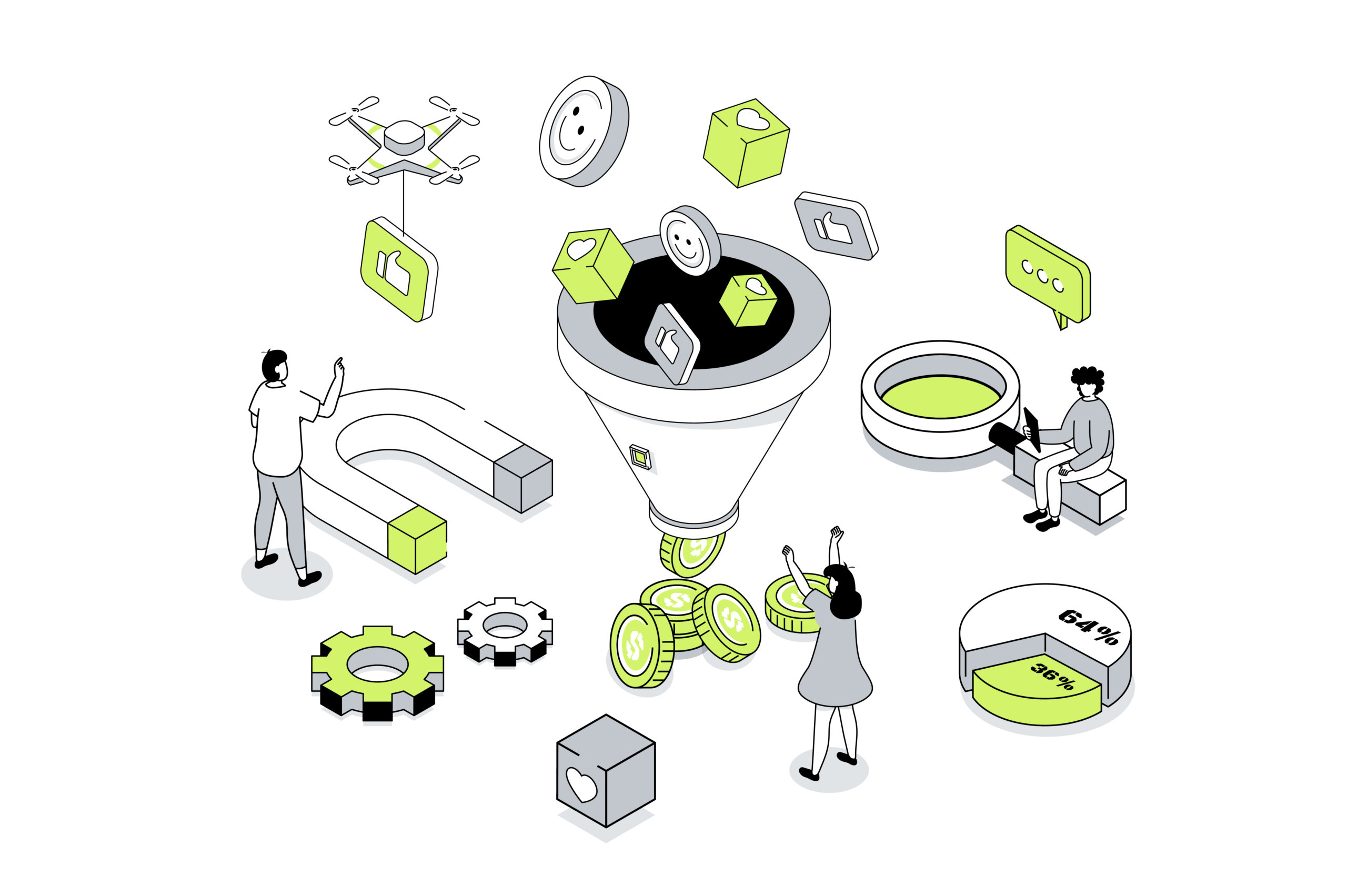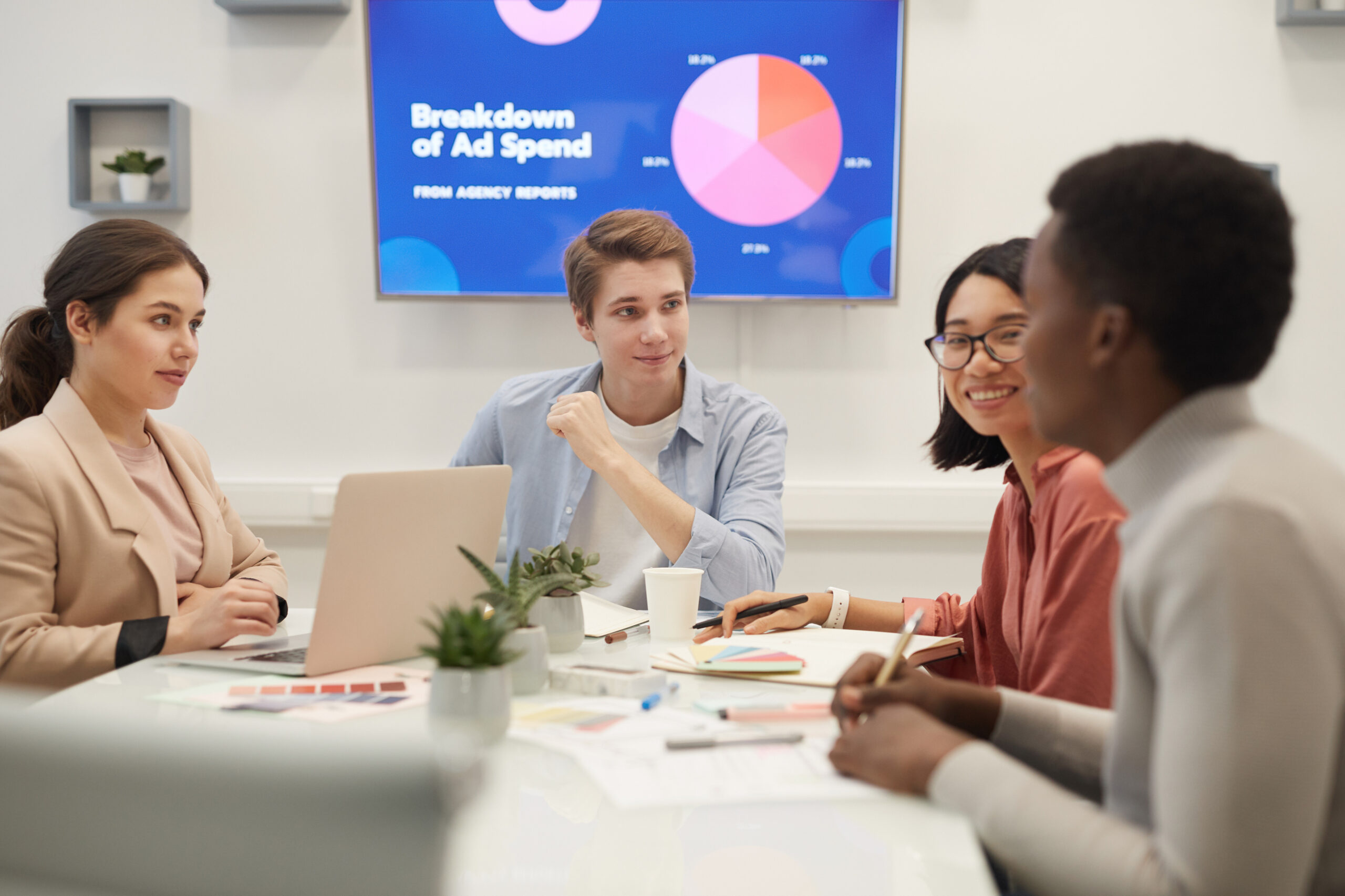- Marketing
- Oct 01
Structuring a Marketing Funnel for B2C Lead Generation: From Website to Native Lead Forms

In the world of B2C marketing, building a well-structured marketing funnel is essential to guiding potential customers through the buyer’s journey and converting them into leads. Whether you’re selling a product or service, a well-designed funnel optimizes every touchpoint to capture the interest of prospects and encourage them to take action. But how should you structure your funnel? What role does your website play, and how can you use native lead forms on social media platforms to supercharge your lead generation efforts?
In this article, we’ll break down the ideal structure of a marketing funnel for B2C lead generation, focusing on key stages and practical strategies to convert visitors into leads and leads into customers.
What is a B2C Marketing Funnel?
A marketing funnel is the journey that a potential customer takes from becoming aware of your product or service to making a purchase. For B2C companies, this process can be broken down into distinct stages, each requiring a specific approach.
The traditional marketing funnel consists of three main stages:
- Top of the Funnel (TOFU): Awareness
At this stage, prospects become aware of your brand and start to identify a need or interest in your product or service. The goal here is to attract potential customers and get them to engage with your brand. - Middle of the Funnel (MOFU): Consideration
In this phase, prospects actively consider your product or service and compare it with competitors. You need to educate and nurture leads to move them closer to a purchase decision. - Bottom of the Funnel (BOFU): Decision
At the bottom of the funnel, prospects are ready to make a purchasing decision. The goal is to provide a compelling offer or solution that encourages them to convert into a customer.
Each of these stages requires different tactics, content, and strategies. Let’s break down how to structure your website and use native lead forms for optimal B2C lead generation.
Structuring the Website for B2C Lead Generation
Your website plays a crucial role in the overall funnel. It serves as a hub where visitors can learn about your brand, products, or services and ultimately convert into leads. A well-structured website guides users through the stages of the funnel seamlessly.
1. Top of the Funnel (TOFU): Attracting Visitors
At the top of the funnel, the goal is to attract potential leads to your website. Here are the key elements to include on your website:
a) Landing Pages
Design SEO-optimized landing pages that target specific pain points or needs of your audience. Each page should focus on one primary topic or solution and include relevant keywords that potential leads are searching for. The content on these landing pages should be informational and not overly promotional at this stage.
b) Blog Content
Publishing regular blog content helps attract organic traffic from search engines and establishes your brand as a thought leader in your industry. Blogs also allow you to provide value to prospects without asking for anything in return, which can be a great way to build trust and move users further into the funnel.
Example: If you sell skincare products, you can create blog posts like “How to Build a Skincare Routine for Sensitive Skin” or “5 Tips to Protect Your Skin in Winter.” These topics appeal to potential leads who might not be ready to buy yet but are looking for helpful advice.
c) Lead Magnets & Pop-ups
Use lead magnets like eBooks, guides, or free trials to capture visitor contact information. Pop-ups that offer these lead magnets can appear after a user spends a certain amount of time on the page or scrolls to a certain point. Ensure the offer is valuable enough to incentivize users to share their email addresses.
Pro Tip: Keep your forms short—asking for just a name and email address initially can increase conversion rates. You can collect more information later in the funnel.
2. Middle of the Funnel (MOFU): Nurturing Leads
In the middle of the funnel, the focus shifts to nurturing those leads into potential buyers. Here’s how your website can support this stage:
a) Product Pages with Detailed Information
Once visitors are considering your products or services, you need to provide them with detailed information to aid their decision-making process. Your product pages should:
- Highlight key features and benefits
- Include high-quality images or videos of the product in use
- Provide customer testimonials or reviews for social proof
- Include FAQs to address common concerns
b) Email Drip Campaigns
Once you’ve captured a lead’s contact information, set up automated email drip campaigns to nurture them. These emails can include product demos, case studies, or success stories to keep your brand top of mind. Personalization is key here—ensure the content resonates with their specific needs or pain points.
c) Interactive Tools
Consider adding interactive elements like quizzes, calculators, or product recommendations that engage visitors and help them narrow down their choices. For example, a skincare brand might use a quiz to help visitors find the right products for their skin type.
d) Clear CTAs on All Pages
Throughout your website, ensure there are clear calls-to-action (CTAs) that guide users to the next step, whether it’s downloading a lead magnet, signing up for a newsletter, or scheduling a consultation.
3. Bottom of the Funnel (BOFU): Converting Leads into Customers
At the bottom of the funnel, your focus is on converting warm leads into paying customers. Here’s how to structure your website for this stage:
a) Compelling Offers
Offer time-sensitive deals, discount codes, or special promotions to incentivize immediate action. These offers should be prominently displayed on your product pages or checkout process.
b) Simple Checkout Process
A cluttered or confusing checkout process can deter potential customers. Ensure your checkout process is simple and mobile-friendly, with minimal steps to complete a purchase.
c) Customer Support Options
Offering live chat or other forms of customer support at the bottom of the funnel can help address last-minute questions or concerns, which can make or break a sale. Make it easy for leads to get answers right when they need them.
Using Native Lead Forms on Social Media Platforms
While your website is an essential part of the funnel, native lead forms on social media platforms like Facebook, Instagram, and LinkedIn can significantly boost your lead generation efforts. These forms are highly effective because they remove the friction of redirecting users to a landing page, allowing them to sign up or provide information directly within the platform.
1. Facebook and Instagram Lead Ads
Facebook and Instagram Lead Ads allow you to collect contact information directly within the platforms, without requiring users to leave the app. This is especially useful for mobile users, as it reduces the number of steps between clicking the ad and submitting their information.
How to Use Facebook and Instagram Lead Ads:
- Targeting: Facebook allows advanced targeting options, including demographic filters, interests, behaviors, and custom audiences (such as retargeting website visitors).
- Lead Forms: When creating your lead ad, you can customize the form fields. While you can ask for various information (e.g., name, email, phone number), it’s best to keep it simple to increase conversions.
- Follow-up: Once you collect the lead data, send an automated email or SMS to follow up with relevant content or an offer.
Example of Use:
If you’re promoting a fitness app, you could run a Facebook Lead Ad offering a free trial. After users submit their email through the native form, they receive an automated email with instructions to download the app and begin their free trial.
2. LinkedIn Lead Gen Forms
For B2C brands targeting professionals, LinkedIn Lead Gen Forms are an excellent tool. These native forms work similarly to Facebook’s lead ads, allowing users to sign up for offers without leaving the LinkedIn platform.
How to Use LinkedIn Lead Gen Forms:
- Targeting: LinkedIn’s targeting is ideal for professionals, allowing you to filter users by job title, industry, company size, and more.
- Lead Forms: LinkedIn’s forms automatically populate user data, making it easy for prospects to submit their information with just a few clicks.
- Content: Offer something valuable in exchange for user data—such as a free consultation, whitepaper, or exclusive content relevant to your product or service.
Example of Use:
A B2C financial services company could run a LinkedIn Lead Gen campaign offering a free guide on “How to Build a Personal Finance Plan.” After users submit their details, the company can follow up with an email offering a free consultation or promoting its services.
Best Practices for Using Native Lead Forms
To maximize the effectiveness of native lead forms, follow these best practices:
- Optimize the Form: Keep the form simple and only ask for essential information (e.g., name and email). You can always gather more data later.
- Create an Irresistible Offer: Your offer must be compelling enough for users to part with their personal information. Free trials, discounts, and exclusive content tend to perform well.
- Follow Up Quickly: Once you’ve captured a lead, send a follow-up email or message immediately. The faster you engage with the lead, the higher the chance of conversion.
- A/B Test Your Ads: Test different versions of your ads to see which combination of ad copy, images, and form fields generate the most leads.
Tracking and Managing Leads with LeadsTrack.app
As you scale your B2C lead generation efforts, it’s important to have a system in place for tracking and managing your leads. This is where LeadsTrack.app comes into play. It offers an intuitive and comprehensive platform designed specifically for managing B2C leads, allowing you to capture, track, and nurture leads effectively throughout the marketing funnel.
Key Benefits of LeadsTrack.app:
- Centralized Lead Management: With LeadsTrack.app, all your leads from various sources (website, native lead forms, paid ads, etc.) are organized in one central location. This makes it easier to manage leads and keep track of where each prospect is in the funnel.
- Automated Lead Scoring and Segmentation: As leads come in, LeadsTrack.app can automatically score and segment them based on engagement, behaviors, and interactions with your brand. This helps your marketing team focus on the most promising leads while nurturing those still in the consideration phase.
- Real-Time Reporting and Analytics: One of the standout features of LeadsTrack.app is its real-time reporting, which gives you a clear view of how your marketing funnel is performing. Track conversions, measure the success of lead forms, and identify any areas for improvement with ease.
- Seamless Integration with Other Tools: LeadsTrack.app integrates smoothly with popular marketing and CRM platforms, allowing you to sync data across your systems. This ensures that your sales and marketing teams always have the most up-to-date information about your leads.
By leveraging a tool like LeadsTrack.app, you can optimize your lead generation efforts and ensure that no lead falls through the cracks.
Conclusion
A well-structured marketing funnel is crucial for converting potential customers into loyal buyers in the B2C space. By creating a website that attracts, nurtures, and converts leads while using native lead forms on platforms like Facebook, Instagram, and LinkedIn, you can significantly boost your lead generation efforts.
Furthermore, using a tool like LeadsTrack.app to track and manage leads throughout the funnel will streamline your process, making it easier to nurture each lead and maximize conversions. From top-of-the-funnel awareness to bottom-of-the-funnel sales, LeadsTrack.app can support you in building a scalable and efficient lead generation system that drives growth for your business.
Related Posts

Affiliate Marketing: Tracking, Sub IDs, Conversion Types, and Best Networks to Get Started
Affiliate marketing has become one of the most popular ways to earn passive income online. Whether you’re a seasoned marketer or just starting out, affiliate marketing allows you to promote products or services and earn…
- Oct 01

How to Use Facebook Ads for B2C Lead Generation
In the digital age, businesses are constantly looking for effective ways to connect with their target audience and convert them into leads. For B2C companies, Facebook Ads is one of the most powerful tools available…
- Aug 08
Categories
Latest Post
1:1 Compliance
- September 14, 2024
How to Use Facebook Ads for B2C Lead Generation
- August 8, 2024




